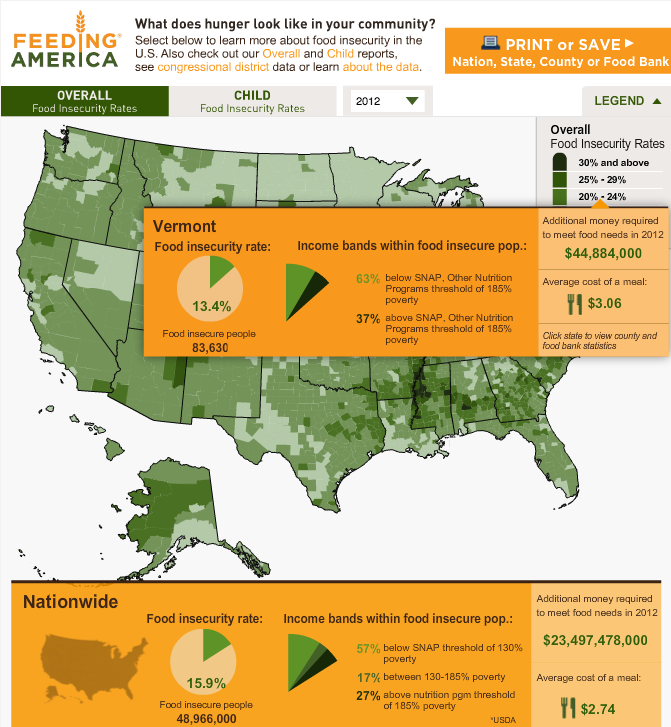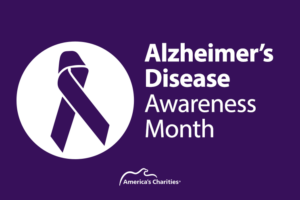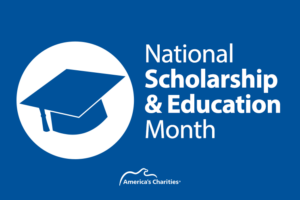Sarah Ford | May 20, 2014
Map the Meal Gap
In order to address the problem of hunger, we must first understand it. Feeding America undertook the Map the Meal Gap project to learn more about hunger at the local community level. By understanding the population in need, communities can better identify strategies for reaching the people who most need food assistance.
Feeding America’s mission is to feed America’s hungry through a nationwide network of member food banks and engage our country in the fight to end hunger. Although we seek to meet the needs of food insecure individuals and families, it is not always easy to identify the need for food within each of our communities. Traditionally, Feeding America has used state and national level USDA food insecurity data to estimate the need (e.g. “49 million Americans are at risk of hunger in 2012”), but food banks are rooted in their local communities and need better information at the ground level in order to be responsive to their unique local conditions.
Until now, the number of people falling below the federal poverty threshold has been the indicator most typically used for identifying the need for food at the local level because it is one of the few indicators available at the county level. However, national food insecurity data reveal that about 57% of those struggling with hunger actually have incomes above the federal poverty level and 59% of poor households are food secure1. Thus, measuring need based on local poverty rates alone provides an incomplete illustration of the potential need for food assistance within our communities. More accurate assessments of need across all income levels within our service areas can assist Feeding America and our network of food banks in strategic planning for charitable food services that best support Americans facing hunger, as well as inform the public policy discussion so that vital federal nutrition programs can better serve those in need. Most importantly, better community-level data can serve as an important resource for engaging community leaders and partners in the journey from aspiration (ending hunger) to achievement through a quantifiable and data-driven approach.
What Does Hunger Look Like in Your Community?

Get Resources and Insights Straight To Your Inbox
Explore More Articles
Open Position: Customer Service Coordinator (Remote-Part Time)
Position Title: Customer Service Coordinator (Remote – Part Time) Department: Charitable Funds Management Solutions We are a non-profit charitable organization looking for skilled individuals who…
Read ArticleGet Resources and Insights Straight To Your Inbox
Receive our monthly/bi-monthly newsletter filled with information about causes, nonprofit impact, and topics important for corporate social responsibility and employee engagement professionals, including disaster response, workplace giving, matching gifts, employee assistance funds, volunteering, scholarship award program management, grantmaking, and other philanthropic initiatives.




